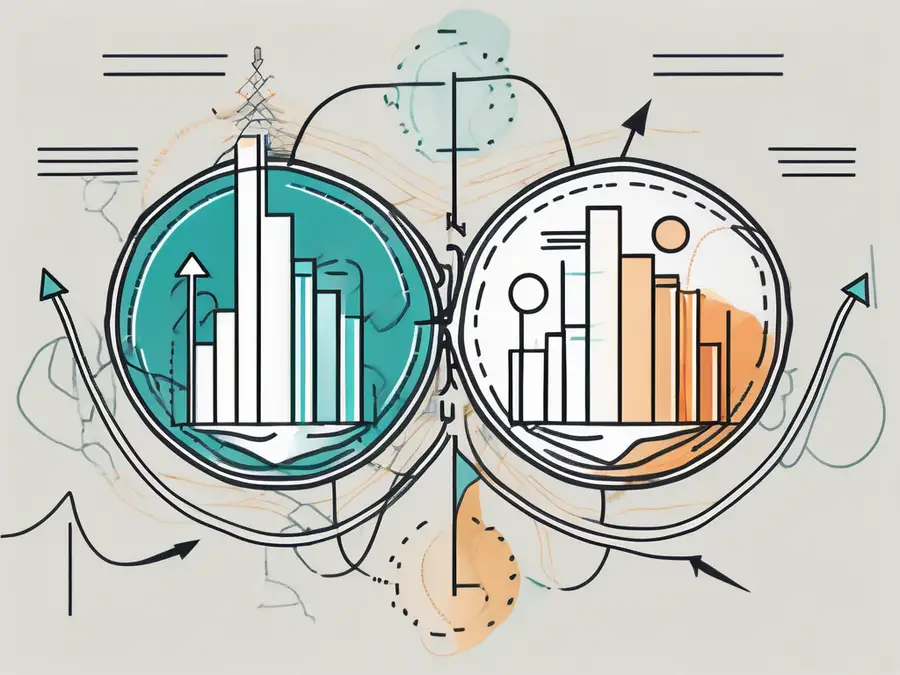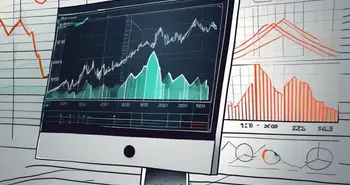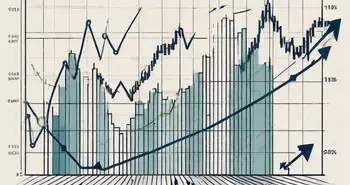What is Wash Trading? A Guide to Market Manipulation

In today’s fast-paced financial markets, the term “wash trading” has gained significant attention, especially with the rise of digital assets and cryptocurrency trading. As someone who has spent years analyzing market strategies and behaviors, I understand the nuances behind this manipulative practice. In this guide, we will explore what wash trading is, its mechanics, its impact on the market, legal perspectives, and ways to detect and prevent it.
Understanding the Basics of Wash Trading
Definition of Wash Trading
Wash trading refers to the practice where a trader buys and sells the same financial instrument simultaneously or within a short time frame to create misleading activity in the market. This manipulation makes it appear as though there is a genuine interest in the asset, leading other investors to make decisions based on this false perception.
This practice is often employed to give the illusion of increased liquidity or to artificially inflate the volume of trades. While it may seem like a clever tactic to gain profit short-term, it undermines the integrity of the financial markets and misleads traders. The consequences of wash trading extend beyond individual traders, as it can distort market prices and lead to a loss of trust among investors, ultimately affecting the overall health of the financial ecosystem.
The History of Wash Trading
Wash trading isn't a new phenomenon; it has a long history that dates back to the early days of stock markets. It was rampant during the early 20th century when traders looked for ways to manipulate prices for personal gain. However, as regulations were established in the mid-20th century, measures were put in place to combat such practices.
With the advent of digital trading platforms, wash trading has evolved, making it easier for unscrupulous traders to execute these manipulative trades while flying under the radar of regulatory bodies. My personal encounters in the markets have shown me how proactive monitoring and regulation are paramount in combating these practices. Furthermore, the rise of cryptocurrencies has introduced new avenues for wash trading, as the decentralized nature of these markets can make it challenging for regulators to enforce compliance effectively. As a result, many exchanges are now implementing advanced algorithms and surveillance techniques to detect suspicious trading patterns, highlighting the ongoing battle between innovation and regulation in the financial sector.
The Mechanics of Wash Trading
How Wash Trading Works
In essence, wash trading creates the façade of active trading in an asset. A trader might use multiple accounts to buy shares of a stock at one price and then sell them at the same price, often in quick succession. This type of trading inflates the trading volume, making it attractive to unsuspecting investors looking for liquidity.
The mechanism can also involve complex strategies, including creating fake buy and sell signals or utilizing algorithmic bots that facilitate the wash trades on a larger scale. These strategies can be executed in highly fragmented markets, allowing manipulative traders to escape the scrutiny of regulators. For instance, a trader might employ a series of algorithms that execute trades at lightning speed, making it nearly impossible for market participants to discern the true nature of the trading activity. This not only misleads investors but can also distort the price discovery process, leading to inflated asset values that do not reflect genuine market sentiment.
Key Players in Wash Trading
Typically, the key players involved in wash trading include individual traders, institutional traders, and sometimes even exchanges that may overlook suspicious trading patterns. Advanced technology allows traders to collaborate or execute these transactions in a way that doesn’t raise alarms immediately. The anonymity provided by certain trading platforms can further embolden these players, as they can mask their identities and intentions while engaging in manipulative practices.
In some cases, insider information may also play a role in wash trading schemes. My experience reveals that awareness and vigilance are essential in identifying and calling out these manipulations, whether you are a retail trader or managing a larger portfolio. Additionally, regulatory bodies are increasingly employing sophisticated surveillance systems to detect irregular trading patterns, but the cat-and-mouse game between regulators and wash traders continues. As technology evolves, so do the tactics employed by those looking to exploit the system, making it imperative for market participants to stay informed and proactive in their trading strategies.
The Impact of Wash Trading on the Market
Effects on Market Prices
The impact of wash trading on market prices can be profound. By artificially inflating the volume of trades, these activities can distort price movements, leading to significant discrepancies between the market price and the true value of an asset. Investors may find themselves purchasing overvalued assets, leading to potential losses.
Moreover, when investors catch wind of such manipulations, it can lead to massive sell-offs, further destabilizing the market. I have witnessed such scenarios where sudden drops in prices leave more than a few disgruntled traders in their wake.
Consequences for Market Integrity
Beyond affecting prices, wash trading erodes trust in market integrity. When traders suspect that prices are manipulated, they may withdraw from the market altogether, leading to decreased liquidity and potential long-term harm to legitimate investors.
The consequences can ripple beyond immediate financial losses, affecting investor confidence and the overall reputation of the market. My advice to new traders is to be aware of these risks and remain informed about market conditions, as naivety can lead to unfavorable outcomes.
Legal Perspectives on Wash Trading
Laws Against Wash Trading
Regulatory bodies, including the Securities and Exchange Commission (SEC) in the United States, have established rules against wash trading. Such laws are meant to protect market integrity and ensure fairness for all participants. These regulations focus on maintaining transparency and discouraging manipulative practices that can mislead investors.
However, enforcement is a complex task, and many wash traders find ways to circumvent these regulations, often leading to a cat-and-mouse game between regulators and manipulators. Staying up to date with these legal frameworks is essential for any trader seeking to navigate the market responsibly.
Penalties for Market Manipulation
The penalties for engaging in wash trading can be severe. Offenders may face hefty fines, trading bans, and even criminal charges, depending on the severity of their actions. None of these outcomes is desirable for anyone serious about trading.
The ramifications not only affect the individual trader but can also impact the firm's reputation if it is involved in such practices. As I often tell my colleagues, safeguarding your reputation is just as crucial as securing profits.
Detecting and Preventing Wash Trading
Signs of Potential Wash Trading
There are several red flags to look out for when assessing possible wash trading scenarios:
- Unusual trading volumes on a relatively inactive asset.
- Frequent buy and sell orders at the same or similar price points.
- Trades executed within seconds or milliseconds of one another.
Recognizing these patterns early can aid traders in making more informed investment decisions and avoiding potential pitfalls caused by manipulated market conditions.
Measures to Combat Market Manipulation
Combating wash trading requires a combined effort from regulatory bodies, exchanges, and traders themselves. Here are key measures to consider:
- Enhanced monitoring of trading activities by exchanges.
- Strict enforcement of existing regulations on market manipulation.
- Education and resources for traders to recognize and report suspicious activities.
Ultimately, fostering a climate of transparency and accountability can help mitigate the risks of wash trading.
Frequently Asked Questions (FAQ)
What is wash trading?
Wash trading is a manipulative practice where a trader buys and sells the same asset simultaneously to create misleading market activity.
How does wash trading affect the market?
It can distort the true market price, mislead investors about liquidity, and erode trust in market integrity.
Are there regulations against wash trading?
Yes, regulatory bodies such as the SEC have established rules against wash trading to protect market integrity.
What are the consequences for engaging in wash trading?
Consequences can include fines, trading bans, and criminal charges, significantly impacting an individual's or firm's reputation.
Understanding the complexities of wash trading is essential for anyone serious about trading in today's market. By staying informed and vigilant, traders can protect themselves and contribute to a fairer trading environment.
As you navigate the complexities of the market and seek to avoid the pitfalls of wash trading, it's essential to choose a trading platform that aligns with integrity, innovation, and user empowerment. Morpher.com stands out as a revolutionary platform that not only offers a unique trading experience free from the traditional constraints of fees and liquidity but also ensures safety and control with its non-custodial Morpher Wallet. Whether you're trading stocks, cryptocurrencies, or exploring unconventional markets, Morpher's blockchain-based system provides the tools for a fair and transparent trading environment. Ready to transform your trading experience? Sign Up and Get Your Free Sign Up Bonus today, and join the future of investing with Morpher.

Disclaimer: All investments involve risk, and the past performance of a security, industry, sector, market, financial product, trading strategy, or individual’s trading does not guarantee future results or returns. Investors are fully responsible for any investment decisions they make. Such decisions should be based solely on an evaluation of their financial circumstances, investment objectives, risk tolerance, and liquidity needs. This post does not constitute investment advice.

Painless trading for everyone
Hundreds of markets all in one place - Apple, Bitcoin, Gold, Watches, NFTs, Sneakers and so much more.

Painless trading for everyone
Hundreds of markets all in one place - Apple, Bitcoin, Gold, Watches, NFTs, Sneakers and so much more.









